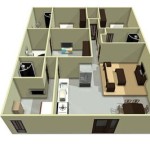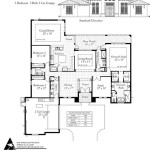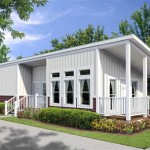Essential Aspects of House Blueprints Floor Plans
A house blueprint floor plan is a detailed technical drawing that outlines the layout and dimensions of a proposed or existing building. It serves as a roadmap for architects, builders, and homeowners alike, providing a comprehensive visual representation of the structure's design.
Floor plans are not merely decorative documents; they hold significant importance in the construction and planning process. Here are key aspects to consider when working with house blueprints floor plans:
1. Accuracy and Precision:
Architectural floor plans must be precise and accurate to ensure that the constructed building aligns with the intended design. Accurate measurements, detailed scales, and proper annotations contribute to the reliability of the plan.
2. Scalability:
Floor plans should be drawn to scale, allowing users to understand the relative sizes and proportions of different rooms and spaces within the building. This scalability aids in visualizing the overall layout and understanding the relationships between spaces.
3. Dimensions and Measurements:
Precise dimensions and measurements are crucial for construction purposes. Floor plans clearly indicate the length, width, and height of rooms, walls, windows, doors, and other features, enabling accurate material calculations and precise installations.
4. Symbols and Conventions:
Professional floor plans employ standardized symbols and conventions to represent various elements. These symbols, such as those for walls, doors, windows, and plumbing fixtures, facilitate easy comprehension and universal interpretation.
5. Room Layout and Flow:
The layout of rooms and the flow of traffic within the house are critical considerations reflected in floor plans. They depict the connectivity of spaces, circulation patterns, and the relationships between different areas.
6. Structural Elements:
Floor plans often include annotations and details outlining the structural elements of the building, such as load-bearing walls, beams, columns, and foundations. These details provide valuable insights into the overall stability and integrity of the structure.
7. Electrical and Plumbing Systems:
Floor plans may incorporate schematics for electrical and plumbing systems, showing the locations of outlets, switches, fixtures, and pipes. This information aids in planning electrical circuits, plumbing layouts, and other utility requirements.
8. Site Plan Context:
In addition to the floor plan itself, a site plan is often included to provide context. This plan shows the building's placement on the property, indicating driveways, pathways, landscaping, and any surrounding structures.
9. Multiple Views and Elevations:
Floor plans can include multiple views, such as ground floor, upper floor, and basement plans, if applicable. Additionally, elevations may be provided, which are vertical cross-sections of the building, offering additional perspectives on the structure's design.
10. Digital and CAD Floor Plans:
In the modern era, floor plans are often created using computer-aided design (CAD) software. These digital plans offer advantages such as flexibility for modifications, ease of sharing, and compatibility with other architectural tools.
House blueprints floor plans are indispensable tools for architects, builders, and homeowners. They serve as comprehensive visual guides that facilitate planning, construction, and decision-making throughout the building process. By understanding the essential aspects of floor plans, individuals can effectively utilize them to create and modify their dream homes.

House Plan J1624 Plansource Inc Small Blueprints Rectangle Plans Floor

Small House Design Shd 2024007 Pinoy Eplans One Y Bungalow Plans Floor

House Plans How To Design Your Home Plan

Est House Plans To Build Simple With Style Blog Eplans Com

House Plans How To Design Your Home Plan

All About Blueprints

Printable House Plans Dream New Blueprints

11 Best Free Floor Plan For 2024

The House Designers Thd 4582 Builder Ready Blueprints To Build A Craftsman Plan With Crawl Space Foundation 5 Printed Sets Com

Modern And Cool House Designs With Open Floor Plans Blog Eplans Com








